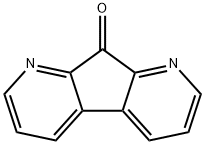TRIMETHYLHEXAMETHYLENE DIISOCYANATE
- CAS NO.:28679-16-5
- Empirical Formula: C11H18N2O2
- Molecular Weight: 210.27
- MDL number: MFCD00040422
- EINECS: 249-151-6
- SAFETY DATA SHEET (SDS)
- Update Date: 2024-12-18 14:15:32

What is TRIMETHYLHEXAMETHYLENE DIISOCYANATE?
General Description
A colorless liquid. Insoluble in water and denser than water. Contact may irritate skin, eyes and mucous membranes. May be toxic by ingestion. Used to make other chemicals.
Air & Water Reactions
Insoluble in water and denser than water. Reacts with water or moisture in the air to form carbon dioxide and the corresponding diamine (USCG 1991).
Reactivity Profile
Isocyanates and thioisocyanates, such as TRIMETHYLHEXAMETHYLENE DIISOCYANATE, are incompatible with many classes of compounds, reacting exothermically to release toxic gases. Reactions with amines, aldehydes, alcohols, alkali metals, ketones, mercaptans, strong oxidizers, hydrides, phenols, and peroxides can cause vigorous releases of heat. Acids and bases initiate polymerization reactions in these materials. Some isocyanates react with water to form amines and liberate carbon dioxide.
Health Hazard
CALL FOR MEDICAL AID. VAPOR: POISONOUS. MAY BE FATAL IF INHALED OR ABSORBED THOUGH SKIN. Contact may cause burns to skin and eyes. Move to fresh air. If not breathing, give artificial respiration. If breathing is difficult, give oxygen. LIQUID: POISONOUS. MAY BE FATAL IF SWALLOWED OR ABSORBED THROUGH SKIN: Contact may burn skin and eyes. Immediately flush skin or eyes with running water for at least 15 minutes. Speed in removing from skin is of extreme importance. Remove and isolate contaminated clothing and shoes at the site. Keep victim quiet and maintain normal body temperature. Effects may be delayed; keep victim under observation. If swallowed and victim is UNCONSCIOUS OR HAVING CONVULSIONS, do nothing except keep victim warm. INHALATION: Poisonous; may be fatal if inhaled. SKIN and EYES: May cause burns. Poisonous, may be fatal if absorbed though skin. INGESTION: Poisnous; May be fatal if swallowed.
Fire Hazard
Combustible POISONOUS GASES ARE PRODUCED IN FIRE. Undergoes decomposition to yield toxic fumes including NOx, and TRIMETHYLHEXAMETHYLENE DIISOCYANATE may react violently with alcohols in the presence of a base.
Properties of TRIMETHYLHEXAMETHYLENE DIISOCYANATE
| Boiling point: | 149°C |
| Density | 1,02 g/cm3 |
| refractive index | 1.4620 to 1.4640 |
| EPA Substance Registry System | Hexane, 1,6-diisocyanatotrimethyl- (28679-16-5) |
Safety information for TRIMETHYLHEXAMETHYLENE DIISOCYANATE
Computed Descriptors for TRIMETHYLHEXAMETHYLENE DIISOCYANATE
New Products
Tert-butyl bis(2-chloroethyl)carbamate (S)-3-Aminobutanenitrile hydrochloride N-Boc-D-alaninol N-BOC-D/L-ALANINOL N-octanoyl benzotriazole 4-Hydrazinobenzoic acid 3,4-Dibenzyloxybenzaldehyde 3-Nitrobenzaldehyde 1,1’-CARBONYLDIIMIDAZOLE R-2-BENZYLOXY PROPIONIC ACID 1,1’-CARBONYLDI (1,2-4 TRIAZOLE) 4-HYDROXY BENZYL ALCOHOL 3-NITRO-2-METHYL ANILINE (2-Hydroxyphenyl)acetonitrile 5-BROMO-2CYANO PYRIDINE 5,6-Dimethoxyindanone 5-broMo-2-chloro-N-cyclopentylpyriMidin-4-aMine 2-(Cyanocyclohexyl)acetic acid 4-methoxy-3,5-dinitropyridine 2-aminopropyl benzoate hydrochloride 1-(4-(aminomethyl)benzyl)urea hydrochloride tert-butyl 4- (ureidomethyl)benzylcarbamate diethyl 2-(2-((tertbutoxycarbonyl)amino) ethyl)malonate Ethyl-2-chloro((4-methoxyphenyl)hydrazono)acetateRelated products of tetrahydrofuran

![1,7-Diaza-spiro[3.5]nonan-2-one](https://img.chemicalbook.in/CAS/20150408/GIF/1235440-17-1.gif)



You may like
-
 873-83-6 6-Aminouracil (or) 4-Amino-2,6- dihydroxypyrimidine, (or) 6-Amino2,4-pyrimidinediol 99%View Details
873-83-6 6-Aminouracil (or) 4-Amino-2,6- dihydroxypyrimidine, (or) 6-Amino2,4-pyrimidinediol 99%View Details
873-83-6 -
 55441-95-7 99%View Details
55441-95-7 99%View Details
55441-95-7 -
 N-Vinylformamide 99%View Details
N-Vinylformamide 99%View Details
13162-05-5 -
 Chloro Uracil 1820-81-1 99%View Details
Chloro Uracil 1820-81-1 99%View Details
1820-81-1 -
 207557-35-5 99%View Details
207557-35-5 99%View Details
207557-35-5 -
 2-ethyl-6-methyl-3-hydroxypyridine succinate 99%View Details
2-ethyl-6-methyl-3-hydroxypyridine succinate 99%View Details
127464-43-1 -
 2-ETHYLPYRIDINE 100-71-0 99%View Details
2-ETHYLPYRIDINE 100-71-0 99%View Details
100-71-0 -
 181228-33-1 (S)-Methyl 3-amino-2-((tert-butoxycarbonyl)amino)propanote Hydrochloride (DAP-OMe. HCl) 99%View Details
181228-33-1 (S)-Methyl 3-amino-2-((tert-butoxycarbonyl)amino)propanote Hydrochloride (DAP-OMe. HCl) 99%View Details
181228-33-1